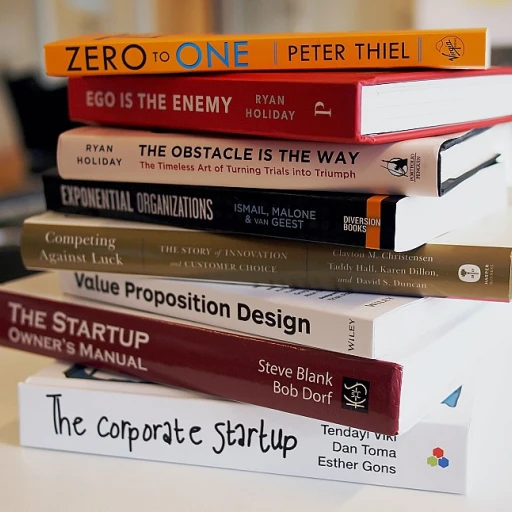Unpacking the Decision-Making Ecosystem in Modern Organizations
Delving into the Decision-Making Fabric of Today's Businesses
Every organization operates within a complex matrix where countless decisions shape the landscape of success. In the fast-evolving business world, the notion of organizational decision making takes center stage, with managerial choices acting as the rudder steering the corporate ship. Deliberations in the boardroom, pulses taken in break rooms, and the analytical prowess of data teams collectively form the backbone of this ecosystem.
The Synergy of Teams in Organizational Judgment
The rhythm of decision making in any business is attuned to the dynamism of its teams and leaders. It’s an intricate dance involving multiple players - with managers and employees alike contributing to the melody. In essence, every team member becomes a pivotal participant in this choreography. Through leveraging mentoring for strategic business success, organizations can facilitate a harmonious balance of expertise and intuitive knowledge, enhancing the caliber of choices made.
Demystifying the Mechanics of Corporate Choice
Understanding the mechanics of decision making processes in organizations necessitates a peek under the proverbial hood. For instance, a McKinsey Quarterly report highlights that clear decision rights and a robust flow of information can significantly improve the quality of organizational decisions. This reinforces the need for businesses to delineate who makes which decisions and to ensure those decision-makers are equipped with the necessary data at the right time.
Orchestrating Effective Decision Making with Data Precision
The lifeblood of informed decisions flows from the quality and timeliness of data. Today's leaders must champion data-driven decision making, where empirical evidence is not just a buzzword but a steadfast partner in the strategic process. From the granular details of market trends to customer behavior analytics, high-quality data is a North Star for companies seeking to navigate through the competitive currents.
The Anatomy of a Decision: How Organizations Process Information
Dissecting the Elements of Decision Making
When an organization is faced with a choice, it's not just about picking an option; it's a multilayered process requiring an acute understanding of the interplay between data, judgment, and probable outcomes. To shed light on how organizations navigate this complex terrain, let's delve into the crucial components that combine to form the backbone of adept decision-making within a business context.
At the heart lies the decision-making process, a series of stages that often commence with the identification of a problem or opportunity. Understanding this sequence is pivotal as it lays the groundwork for informed, strategic choices. The cycle typically unfolds across several phases, starting with problem recognition, transitioning through data collection, alternative evaluation, arriving at a decision, and culminating with its implementation and subsequent review.
Data and Dialogue: The Twin Pillars of Decision Architecture
Integral to this process is the meticulous analysis of data, comprising both quantitative stats and qualitative insights. Reliable figures are the north star guiding organizations through the fog of uncertainty. For instance, when a company faces a declining market share, it's not just the 5% drop that's alarming but understanding the why behind it that's crucial for course correction. A McKinsey Quarterly report might reveal that organizations thriving on data are 23% more likely to outperform peers in profitability, underscoring the value of a data-centric approach.
However, data alone can't capture the full picture. Dialogues within teams ensure a 360-degree view is achieved, blending different perspectives and fortifying the decision's foundation. A model decision, therefore, emerges from a synthesis of hard numbers and seasoned judgment, often facilitated by managers seasoned in the art of strategy. This synthesis balances rational analysis with the nuanced, sometimes intuitive understanding that seasoned managers bring to the table.
Encapsulating Expert Opinions
In this ecosystem, the role of experts cannot be overstated. Recognized authorities like Harvard Business School professor Ronald Heifetz regard adaptive leadership as a critical skill in decision-making. Drawing on expertise is not just about heeding advice; it's about integrating it into the company's decision fabric, ensuring it's translated into actionable strategy. It's essential to note that experts, such as Herbert Simon, who illuminated the concept of bounded rationality, provide the underpinnings for understanding limitations in organizational decision-making and the importance of heuristics in shaping decisions.
A case in point is the strategic pivot undertaken by Netflix under the guidance of Reed Hastings, a move that demanded both acute analysis and bold intuition. Reflecting on such examples serves as a vivid reminder of how a well-articulated decision-making process can fuel long-term gains. The company's choice to shift from DVD rentals to streaming was data-informed but also carried the weight of intuitive foresight about consumer trends, a classic illustration of effective decision-making.
The Layered Complexity of Organizational Choices
Within the labyrinth of choices that companies navigate, it's the nuanced decision making model that emerges as a beacon for success. Organizations that have patiently refined their decision-making architecture are often the ones that stand the test of time. Consider the ongoing evolution at a legacy brand like McDonald's Corporation. Their continuous refinement in choices regarding menu variety, digital engagement, and service delivery is not just about adaptability but a testament to their mature decision-making frameworks.
As business administration continues to evolve in the United States and beyond, it becomes increasingly clear that making quality decisions is less about isolated moments of choice and more about a systemic, dynamic process. This very process defines the organizational decision-making paradigm, one where data, expert insight, and astute management converge to craft a strategic path forward for businesses across the spectrum.
For more insights into how financial metrics drive and inform the decision-making journey in organizations, don't miss a chance to explore strategies for business excellence that can further enhance understanding and strategic application.
Deciphering the Decision Maker’s Mind: Insights from Top Strategists
Unveiling the Strategist's Playbook: Expert Insights into Decision Influencers
The keys to unlocking organizational success often rest within the minds and approaches of the company's leading strategists. Taking a peek into this cerebral realm, we find that these seasoned veterans weigh a complex blend of elements when steering their organizations towards prosperity. As we dissect the decision-making process, we notice that understanding the psyche of decision-makers is paramount in sculpting company strategy.
Tapping into the Wisdom of Veteran Strategists
When we consider the breadth of knowledge from business gurus like Peter Drucker, whose work still resonates in countless boardrooms across the United States, we begin to fathom the depth of strategic expertise available. Drucker's assertion that 'the most important thing in communication is hearing what isn't said' holds particularly true in decision-making. It's not just about the data presented but also about the subtext, the unspoken challenges and opportunities that seasoned strategists can intuit.
Case Studies: Learning from the Titans of Industry
Turning our gaze towards practical applications, we find inspirational stories of decision-making prowess. Companies like Google, Amazon, and Apple consistently showcase how harnessing top-tier executive insight propels strategy. Apple, under the guidance of Steve Jobs, demonstrated the transformative power of intuitive decision-making coupled with technological innovation. Similarly, Reed Hastings at Netflix shook the foundations of traditional media consumption by betting on streaming—a decision that rewrote the entertainment industry playbook.
For another vivid illustration, look no further than McDonald’s Corporation, whose strategic pivots have led them to maintaining a dominant market position worldwide. It is in these real-world examples that we can extract vital lessons on the deliberations leading to pivotal shifts in business direction.
Bounded Rationality: Navigating the Limits of Human Cognition
Herbert Simon, a luminary in the field of organizational behavior, introduced the concept of bounded rationality, a stark reminder that decision-makers operate within the constraints of limited information and cognitive processing capacity. Recognizing these limitations is essential to appreciating the heuristics or mental shortcuts that strategists employ during complex decision-making processes.
Strategic Synthesis: Balancing Data with Heuristics
In making quality decisions, leaders often balance empirical data with their accrued wisdom, essentially blending rational decision-making models with intuitive judgment. Gerald Lackey's insights, detailed in his incisive reports on management decision making, highlight how high-caliber decision-makers navigate this duality. As he illustrates, it’s the intelligent synthesis of varied inputs that forms the cornerstone of effective organizational decision-making.
Deconstructing Decision Making for Steadfast Results
Fostering a making-decision culture that prioritizes clarity and expediency while allowing for flexibility is a hallmark of successful organizations. From Ronald Heifetz's adaptive leadership framework at Harvard Business School to the stewardship demonstrated in Washington's halls of power, the patterns of successful decision architecture become apparent. The emphasis rests on decision rights, open communication, and accountability, each serving as a vital cog in the decision-making machinery of an organization.
Decoding the Nuances of High-Stakes Decisions
As we deepen our understanding of organizational behavior and the psychology behind decision-making, it’s crucial to study how decision-making styles influence business outcomes. Does a company thrive under a decisive command or collective consensus? The interplay of individual decision-maker tendencies and the organization's overarching methodology can define the trajectory of its strategy. Exploring these dynamics offers profound insights into shaping robust business models.
In essence, expert insights and real-world examples are not just academic exercises; they are the touchstones of organizational wisdom that underpin the art and science of decision-making. Bearing witness to these insights allows us to distill the essence of effective strategy. It is within this very alchemy that organizational success is forged.
Rational Versus Intuitive: Blending Decision-Making Models for Success
Merging Minds and Models in Decision Making
At the heart of every thriving business is a robust decision-making apparatus. In a landscape where the speed of change is relentless, the dichotomy of rational versus intuitive approaches to making decisions can no longer be as clear cut as we once thought. Employing a mix of both can be the secret sauce to strategic success.
Delving into the rational decision-making model, we find it rooted in empirical data and logical processing. It’s underpinned by the notion that, given enough information, decision makers can chart a path that is optimal for organizational outcomes. This approach is influenced by Herbert Simon’s theory of bounded rationality, which suggests that while striving for rationality, our decisions are framed by the information we have, the cognitive limitations of our minds, and the finite amount of time we have to make a decision.
Navigating the Intuitive Landscape
On the flip side lies intuitive decision making, an often-overlooked art in the circles of management. Leaders like Steve Jobs and Reed Hastings have shown how gut feelings and instinct play a pivotal role in the evolution of companies like Apple and Netflix. These decision makers understand that intuition is a culmination of past experiences, a subconscious information processor that swiftly cuts through complexity, offering insights that logical analysis alone may not reveal.
Studies show that senior executives trust their gut when making decisions over 50% of the time—a nod to the hidden power of intuition in the upper echelons of business strategy.
Creating a Cohesive Decision-Making Fabric
The question then becomes: How do organizations weave these seemingly disparate threads into one cohesive fabric? The key is recognizing that the two models aren’t mutually exclusive. For instance, Google’s famed 20% time – where employees spend a fifth of their time working on what they think will most benefit Google – mirrors this hybrid approach, melding rational considerations of time management with space for intuitive explorations.
However, this blend must be strategically tailored to each unique situation. When dealing with high-stakes, long-term decisions, the rational model's rigorous data analysis provides a foundational bedrock. When time is of the essence or when the data is ambiguous, an intuitive approach can pierce through the fog of uncertainty. Gerald Lackey's research in the 'Decision Making Styles of Managers' posits that effective leaders are those who can pivot between these styles as circumstances dictate.
The Pulse of an Agile Organization
An agile organization is one that understands the tempo of decision-making styles. McKinsey Quarterly reports that companies able to strike a healthy balance between rational and intuitive styles are better equipped to navigate the complexities of modern business. They are quick to adapt, keen to innovate, and equipped to face challenges with both analysis and instinct.
By fostering an atmosphere that values data-driven insights while honoring the profound wisdom of intuition, employees at all levels are empowered to make quality decisions. This empowerment inherently elevates the decision-making process from a managerial task to a shared responsibility, fostering a more dynamic and engaged workforce.
In conclusion, blending rational and intuitive decision-making models doesn't just add value to the strategic processes; it enriches the organizational ethos itself, turning decision making into a collective driver for success that resonates with today’s multifaceted business demands.
Data-Driven Decisions: How Empirical Evidence Guides Strategy
Guiding the Helm with Data: The Heartbeat of Strategic Choice
Imagine navigating the complex sea of business strategy, where every swirl of data points and statistical trends could alter the course of your company's future. That's the pulse of modern organizations, relying on this empirical compass to steer their decision-making. This reliance isn't a trendy choice; it's a fundamental shift towards a more informed and precise approach in charting the organization's trajectory.
Expert opinion has consistently highlighted the surge in data analytics impacting decision-making. Companies like Google and Amazon have set the stage, showcasing their prowess in leveraging vast troves of data to predict trends, personalize customer experiences, and optimize operations. Their successful strategies hinge on the synthesis of real-time data, harnessing insights that drive innovation and competitive advantage.
But it's not just the tech giants reaping the benefits of a data-centric approach. Reports from McKinsey Quarterly illustrate that across sectors, organizations are prioritizing data to enhance their decision-making arsenal. By evaluating vast datasets, companies are identifying inefficiencies, spotlighting opportunities for growth, and making swift, evidence-based decisions.
Data Quality over Quantity: Cultivating a Conducive Environment for Analysis
One key element in the symbiosis of data and decision-making is the quality of the data itself. Gathering mountains of information won't yield substantial benefits if the data isn't accurate, relevant, and actionable. It's a notion resonated in the Harvard Business Review, pointing out that the focus should be on collecting data that directly supports strategic objectives and resolves particular business questions.
In practice, this means refining the process of data collection and analysis. It's about training employees to discern which metrics matter most and developing a robust analytical infrastructure to process that information. Organizations adept at this avoid the common problem of analysis paralysis, where an overload of data obfuscates rather than clarifies strategic direction.
The Intersection of Empirical Data and Managerial Wisdom
There's an exquisite balance that seasoned strategists like Peter Drucker and Ronald Heifetz advise companies to strive for�where data-informed decisions are augmented by managerial acumen and insight. After all, data can illuminate patterns and probabilities, but it's the human element�the intuition and experience of decision makers�that must interpret these findings within the broader strategic context.
Concepts like bounded rationality, as introduced by Herbert Simon, remind us that while we aim for rational decision making, our capacities are limited by the information we have and the cognitive constraints inherent in our minds. Thus, incorporating behavioral economics and understanding cognitive biases become instrumental in ensuring data serves the organization's best interests.
Case Studies: Learning from Success and Stumble
Let's look to Netflix, a company well-documented for its data-oriented decision-making processes. By meticulously examining viewer data, they have crafted highly popular original content, positioned them at the pinnacle of the streaming wars. Similarly, McDonald's Corporation has utilized data to optimize its menu selection and drive-thru efficiency, significantly enhancing the customer experience.
On the flip side, companies ignoring the crucial role of data or misinterpreting it have faced setbacks. A study of a major corporation�s failed product launch revealed a misalignment between consumer data analysis and product development, leading to a stark disconnect from customer needs.
Strategic Agility Through Data Empowerment
Ultimately, the organizations that most effectively synthesize empirical evidence with strategic foresight�those that empower their teams to pivot based on actionable insights�are more likely to thrive in an ever-shifting business landscape. This strategic agility allows for a proactive rather than reactive stance, fostering a culture where quality decisions are the norm, and long-term success is more than a probability�it's a plotted course confirmed by data.
The Hazards of Heuristics: Avoiding Pitfalls in Organizational Decision Making
Steering Clear of Cognitive Shortcuts in Business Judgments
Imagine you're facing a tight deadline for a critical company project. In the hustle of the moment, it might feel efficient to rely on quick heuristics or gut feelings for decision-making. Yet, it's precisely in these high-stakes scenarios that businesses must be wary of the hazards heuristics present. These cognitive shortcuts, while energy savers, can significantly skew the quality of decisions within organizations.
Navigating the Bias Maze for Better Organizational Outcomes
A multitude of studies have illuminated the impact of biases in organizational decision-making. For instance, consider the confirmation bias, where decision-makers favor information that confirms their existing beliefs, often overlooking contradictory data. The decision to greenlight a project might be more influenced by optimistic projections and echoes of agreement rather than a tough, data-based critique. According to the Mckinsey Quarterly, companies that prioritize decision-making hygiene, such as challenging the status quo and seeking diverse perspectives, have been rewarded with improved strategic outcomes.
Counteracting Heuristics with a Structured Decision Framework
To mitigate heuristic temptations, organizations can formalize their decision-making processes. Models that include clear steps to assess risks, gather varied inputs, and analyze alternatives can bolster the rational grounds for business choices. For instance, the Delphi method, with its iterative rounds of expert consultation, fosters informed and de-biased consensus. Upholding a standard of structured evaluation helps avoid hurried, gut-based calls that could lead to suboptimal results.
Expert Interventions: Delving into Behavioral Insights
Renowned figures like Herbert Simon and Daniel Kahneman have delved deep into the complex world of behavioral economics, emphasizing the extent to which heuristics can cloud the judgment of even the most knowledgeable managers. Simon's concept of 'bounded rationality' explains why decision-makers, despite their intentions for rationality, often settle for satisfactory rather than optimal solutions. Kahneman’s work further elaborates on various cognitive biases that pervade decision processes. These expert insights highlight the importance of continual learning and skill development in decision-making.
Real-World Relevance: Case Studies on Heuristic Hazards
Tangible examples of heuristic-driven mistakes underscore this point. The case of Kodak, once an innovative giant in the photography industry, serves as a cautionary tale. Kodak's leadership heavily relied on its previous success with film cameras. This anchoring bias contributed to its downfall as it failed to pivot swiftly to digital - a shift its competitors executed effectively. Similarly, the downfall of Blockbuster, with its overconfidence in the store-based rental model, reiterates the cost of heuristic-induced complacency.
Mixing Systems: Ensuring Balance in Organizational Judgments
McDonald’s Corporation's success in revamping its menu choices is a positive example where a balance between intuitive and rational decision-making led to a strong market position. Emphasizing data while respecting managerial intuition enabled them to adapt to changing consumer preferences. This blend of 'thinking fast and slow', a term popularized by Kahneman, encapsulates the ideal synergy for making quality decisions, especially in the realm of organizational strategy.
Ultimately, organizations fare better when they develop cultures that recognize and actively seek to counteract the hazards of heuristics. By combining empirical data with expert guidance, businesses can navigate the complex tapestry of organizational decision-making with greater confidence and precision.
From Insight to Action: Translating Expert Opinions into Organizational Strategy
Expert Insights as a Catalyst for Organizational Change
When it comes to organizational decision making, the value of expert insights cannot be overemphasized. These are the seasoned voices that blend years of experience with a deep understanding of the business landscape. A report by McKinsey Quarterly suggests that high-quality decision making has been shown to correlate directly with strong business performance. Indeed, organizations that have advisory input from experts in their strategic grapple tend to navigate the complex business environment more effectively.
Concrete Examples of Expert Advice in Action
Perhaps there's no better way to illustrate the impact of expert opinions than through a solid case study. Consider Apple and the legendary influence of Steve Jobs. Jobs, known for his intuitive decision making, also relied heavily on data and expert opinions to shape Apple’s strategy. His ability to turn insights into action is a testament to effective decision making that companies strive to emulate. Another exemplar is Reed Hastings of Netflix, who leveraged expert insights to pivot his company from a DVD rental service to a streaming giant, effectively changing the organizational strategy to adapt to market trends.
The Bounded Rationality Model and Its Implications
Noted by Nobel Laureate Herbert Simon, the bounded rationality model acknowledges that decision makers operate under constraints that limit their ability to process information. This model emphasizes the importance of deriving quality decisions within these boundaries. As such, experts often help companies by providing a frame to view complex problems, radically enhancing the decision making organizational process. They offer alternative perspectives that may not emerge naturally within the company, thus enriching the decision making style of the organization.
Implementing Expert Recommendations with Precision
Harvard Business School’s Ronald Heifetz's work on leadership emphasizes the importance of 'adaptive' decision making, which entails identifying and addressing systemic changes. Experts provide directional focus, but for their contributions to be effective, organizations must have a concrete decision making model in place. This entails establishing clear decision rights, ensuring that recommendations do not become lost in translation but are translated into tactical actions with accountability.
The Synergy between Data and Expert Insight
While empirical data is indispensable, it becomes even more powerful when paired with expert analysis. Gerald Lackey’s studies reveal that when data is contextualized with professional insights, organizations can forecast long-term trends and make quality decisions that foster sustainable growth. This integration aligns with the rational decision making model but also leaves room for the inevitable intuition that complements data.
Strategic Application of Expert Opinions
Effective decision making within organizations often involves translating expert opinions into practical strategy. For instance, McKinsey's consultants might dissect vast amounts of market data, but it's their expert interpretation that guides multinational companies to carve out competitive advantages. In this realm, strategy becomes less about the quantity of data or number of opinions and more about the quality and relevance of the expert synthesis presented to decision makers.
Conclusion: Expert Opinions as a Springboard for Organizational Agility
In conclusion, integrating expert insights into the organizational decision making process equips companies to respond to changing market dynamics proactively. Experts can transform data into strategic foresight, enabling organizations to move from insight to action with confidence. As we witness the continuous evolution of decision making processes, the value of expert opinions remains a keystone for companies intent on not just surviving but thriving in the competitive business arena.
Evolving Decision Rights: Empowering Teams for Agile Response
Granting Autonomy: The Role of Decision Rights in Company Agility
In the high-speed business world, agility is the name of the game. Organizational decision making is no longer the exclusive domain of those at the top. Hierarchical modes of operation have now given way to a more distributed architecture of decision authority, wherein empowering teams is seen as vital for an agile response to market changes.
Steering the Wheel Together: Collaborative Approaches to Decision Making
Empirical data suggests that companies known for their agility often attribute their responsiveness to a decentralized decision-making framework. McKinsey's research has elucidated that organizations providing cross-functional teams with decision rights can improve their operational efficiency by up to 35%. Such a model fosters team synergy and ensures that those closest to a given problem are conferred the authority to solve it.
Integrating Empowerment with Accountability
Empowering teams should also mean equipping them with not just the freedom to make decisions but also the onus of accountability. One study from Harvard Business School suggests that clear definition of decision rights among teams bolstered both the speed and quality of decisions. It all comes down to trust and clarity—two indispensable facets of making organizational decision-making both efficient and effective.
Adaptive Decision Rights for the Unpredictable Markets
At the heart of leveraging decision rights is managing the balance between freedom and structure. Ronald Heifetz of Harvard emphasizes that for leadership to be adaptive, it must delineate the decision boundary; knowing when to step in and when to let the team navigate the waters. Gerald Lackey, in his book on organizational behavior, underscores that fluid decision environments require leaders to sometimes adopt a hands-off approach, fostering a culture where team decision-making is habitual.
Case Studies: Success Stories of Decentralized Decisions
Success cases like Google and Netflix illustrate the triumphs of enabling teams to make choices that drive innovation. For instance, Google's '20% time' policy, which encourages employees to dedicate a portion of their time to personal projects, has resulted in landmark products like Gmail and AdSense. Similarly, Netflix's freedom-and-responsibility culture is credited for its capacity for rapid adaptation and high employee morale.
The Interplay between Data and Autonomy
For decision rights to be effective, teams require access to relevant data. Be it customer insights or real-time analytics, the currency of data is indispensable in an era where decision making models have to be both empirical and agile. A Delphi study indicates that companies integrating data accessibility with decision rights are more likely to make quality decisions in reduced timeframes, giving them an edge in competitive markets.
Conclusion: The Guiding Principles for Dynamic Decision Rights
In the end, while granting decision rights may foster innovation and responsiveness, it's the framework within which these rights are exercised that ensures sustained success. As per Steve Jobs' philosophy at Apple, it's not about making decisions by committee, but enabling smart, engaged people to make decisions with the right context. As organizations evolve, granting the right amount of autonomy, balanced with clear accountability, remains key in shaping a resilient and forward-thinking business.














